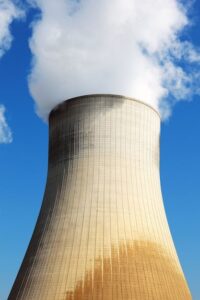Kenya is heading towards commissioning its initial nuclear power plant by 2034 as the Nuclear Power and Energy Agency (Nupea) has affirmed the country is in the last stage of the construction.
When presenting this update, Nupea’s Director of Strategy and Planning, Winnie Ndumbai reported this to the Senate Energy Committee that was chaired by Nyeri Senator Wahome Wamatinga. The committee was told by Ndumbai that has made giant strides in the nuclear development and that Kenya is on the right path to the pursuit of nuclear power.
Phases
Dr. Ndumbai outlined the three key phases of preparing for nuclear power infrastructure: , first, the steps to deliberate on the nuclear power program; second, the work to prepare to contract and construct the plant; and last, the implementation stage of the plant.
Namibia’s Ndambia says that the government has already embarked on a nuclear programme through feasibility studies, building the capacity of human resource, formulation and establishment of the Namibian nuclear Regulatory Buerness and the identification of suitable sites for nuclear power plants.
Kenya is today in the second phase of nuclear power plant where preparatory measures towards physical construction of the plant are being undertaken. Two possible locations for the plant have been found in Kilifi and Kwale to KENGA that more efforts are being made to improve nuclear legislation in the country.
In the last stage, which includes plant construction and commissioning by 2034, Ndumbai noted that this shall be a significant step for the nation.
Challenges
Nupea’s Director of Nuclear Energy Infrastructure Development, Eric Ohaga also noted that in the last three years Kenya has made tremendous progress in establishing nuclear energy infrastructure. On 29th July 2021, the IAEA phoned, approved Kenya to launch phase two of the nuclear program, and then signed the protocol on August 9, 2021.
First, 29 candidate locations were identified in the Lake Victoria region, the Lake Turkana area, and the Indian Ocean. But, the detailed characterization of the site ruled out sites that would subject the plants to frequent volcanic activities and seismic activities leaving Kwale and Kilifi counties as the most appropriate, declared Ohaga.
Ohaga also disclosed that scientific research shall be conducted so as to determine that the said sites have met all the criteria. He also noted capacity building in Kenya’s nuclear energy, including the much ambitious projected of making sure that there is at least 1000 nuclear scientists trained to enable the design and construction of nuclear power plant by the year 2036.
Kenya is aspiring to mimic South Africa Chinese partners that has two nuclear power stations and plans to build 2 more by 2029. Egypt is also planning to build four nuclear power stations before the year 2029, Ghana and Nigeria are also planning to set up nuclear plants.
According to Ohaga, Rwanda, Tanzania, and Uganda are in East Africa and are advancing in nuclear but still in phase one. He noted that nuclear energy is very reliable and can supply power for the country for up to two years without interruption.
‘Coastal and western region will benefit from a nuclear power plant in that there will be little transmission losses and frequent power blackouts, voltage flunctions and load shedding,’ he said. It will also help prop up industrial development once it begins operations, said Ohaga.
Read also Kenya set to start construction of nuclear power plant in 2027.

